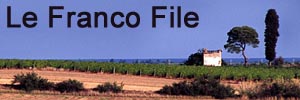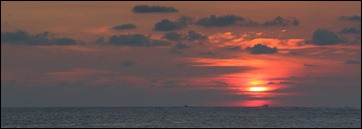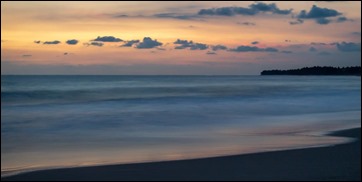Our dismal so-called campsite, L’Hirondelle/Capfun, in Belgium turned even more dismal overnight as rain started. We awoke to continuing rain. We’d be getting into Germany today and I was hoping things would get more civilized. I used to regard Belgium as an irritation to be driven through in order to get to Germany. Then I made some Belgian odo-nutter friends and moderated my opinion. Now, having looked for and failed to find a decent campsite, I think I’m back to my original frame of mind.
The early morning continued in the vein of yesterday evening as a small collection of Satan’s Little Disciples wandered passed us with music playing loudly while I set about packing up. I couldn’t wait to get away.
Being further on through Belgium than originally planned, courtesy of an earlier ferry and despite traffic disruption, Francine now had to re-plan our next stop. Once that was done, we could calculate our departure time. I know this sounds a bit odd but Germany presents an interesting difficulty – ruhigzeit or mittagsruhe. This is a traditional lunchtime lull when no vehicle movement on campsites is permitted. It’s usually two hours between 13:00 and 15:00. This is bothersome, to say the least. It forces you to time your arrival since bailing out in many places with a caravan hitched up varies between difficult and impossible. Francine found an interesting sounding campsite near Montabaur which would be about four hours driving, with comfort breaks. We braved the continuing rain and gleefully left our little slice of Hell at about 11:00.
The weather continued to be grubby for most of the journey. Stopping at a service area for a coffee, now in Germany, I couldn’t help but be tempted into a Bratwurst mit kartoffeln for lunch. Francine weakened and shared my bounty. Things were looking up, now I was in the land of real food: sausage and potatoes – forget the rabbit food trimmings.
Legally limited in Germany to 50mph/80kph towing a caravan, our arrival time continued to extend towards the magic 15:00. [Bloody silly Beemer satnav seems to assume you’ll do the limit when calculating arrival time. Duh!] We arrived shortly after and were greeted by mein host, Herr Wolf, speaking excellent English and cracking jokes- Herr Wolf not the big, bad wolf. I volunteered my rusty German and we switched. He asked if I’d learnt German in the army. Nein, im schule. Ahh. I got that one wrong – in der Schule – but Herr Wolf forgave me. I never was very good at German and it was last used a very long time ago.
Both Herr Wolf and his campsite were revelations; he very pleasant and welcoming and the campsite a proper one with beautifully hedged pitches and full of proper campers as opposed to ghetto-blasting dickheads. Each hedged pitch has it’s own water point and waste disposal point and, of course, electricity, though a mere 6amps. There is a lattice of concrete with grass growing through so it is rather like a luxury hardstanding. We’ll have too be very careful with power since our kettle draws 4amps. How do I turn off the water heater in All New Guillaume? Yikes!
Adding to all this, Herr Wolf’s land includes a small lake/large pond fed by a tumbling woodland stream. I mentioned libellen [dragonflies] to Herr Wolf and he said “ja, blau Libellen”. In anticipation, we got All New Guillaume set up and went to look for Libellen. [German, incidentally, capitalizes all nouns.]
On a very relaxing wander around Her Wolf’s private little nature reserve, we found four damselfly species:
- Calopteryx splendens (Banded Demoiselle)

- Ischnura elegans (Common Bluetail)
- Platycnemis pennipes (Blue Featherleg)
- Coenagrion puella (Azure Damselfly)
 In the tree beside Guillaume Sparrows are feeding youngsters. We see two little heads gaping at the nest box entrance at each feeding visit. This is interesting – our Bluetits at home enter the box to deliver food. These sparrows feed from the nest box entrance. They provided some relaxing early evening entertainment as both adults delivered beaks full of food in rapid succession. I became a little concerned later on when 10 successive feeding visits were made by the female alone; I was fearing for her male partner. Whatever had become of him?
In the tree beside Guillaume Sparrows are feeding youngsters. We see two little heads gaping at the nest box entrance at each feeding visit. This is interesting – our Bluetits at home enter the box to deliver food. These sparrows feed from the nest box entrance. They provided some relaxing early evening entertainment as both adults delivered beaks full of food in rapid succession. I became a little concerned later on when 10 successive feeding visits were made by the female alone; I was fearing for her male partner. Whatever had become of him?
Putting this wildlife concern aside, I was beginning not to need my “beam me up, Scotty” button. This place is like a breath of fresh air compared to last night’s apology for a campsite. We love it. We may not move. 😀




















































Recent Comments